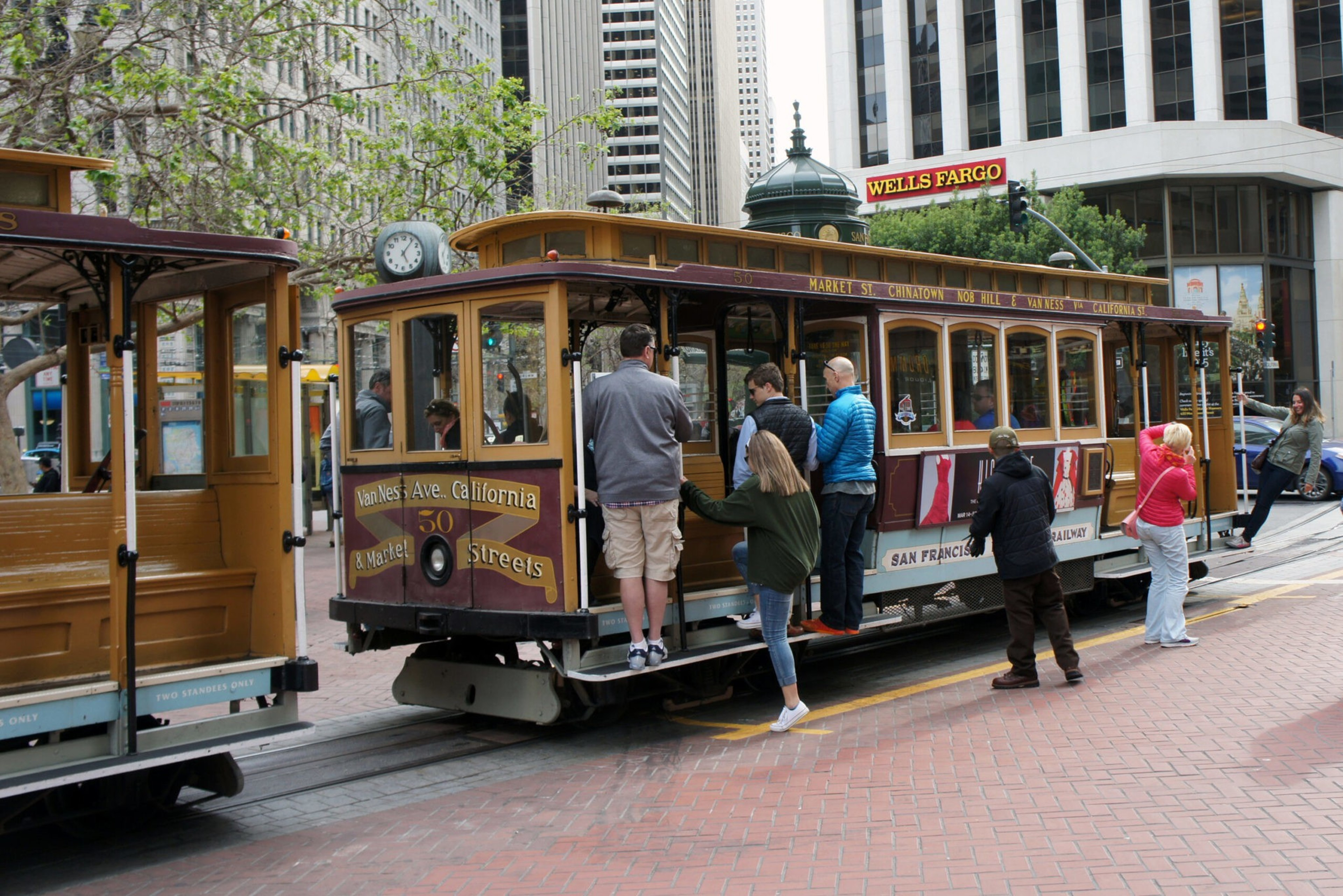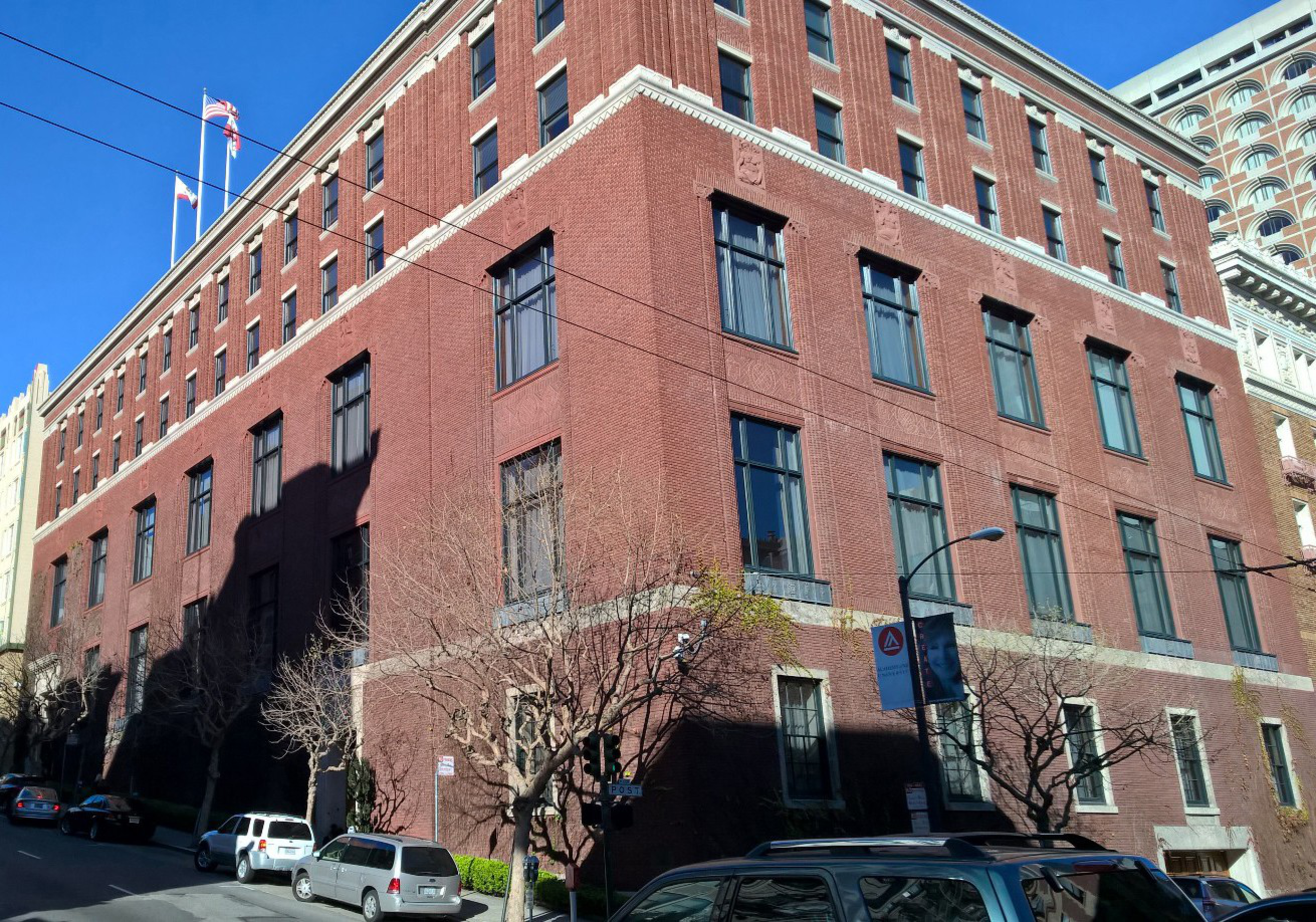In 1863, Mark Twain wrote (opens in new tab) that leaving San Francisco was like abandoning paradise for prison. In 1891, Oscar Wilde mused (opens in new tab) that “everyone who disappears is said to be seen in San Francisco” and speculated that the city possessed “all the attractions of the next world.” More than a century later, in 1993, Tony Kushner envisioned (opens in new tab) heaven as a San Francisco-like city in his play Angels in America.
From its rocky island prison to its secluded, leafy stairways ascending the hillsides, San Francisco—and the surrounding Bay Area—is an undeniably literary setting. It has inspired sojourners like Joan Didion and Maya Angelou and shaped the careers of contemporary writers like Andrew Sean Greer and Malinda Lo.
To celebrate Litquake (opens in new tab), the annual festival of books and authors that returns Oct. 6-22, we’ve put together a map of quotes to help you see the city through the eyes of some of its most celebrated writers.
Macondray Lane
“It was a well-weathered, three-story structure made of brown shingles. It made Mary Ann think of an old bear with bits of foliage caught in its fur. She liked it instantly.”
– Tales of the City by Armistead Maupin (1978)
The fictional Barbary Lane where Armistead Maupin’s heroine Mary Ann finds a home in San Francisco is inspired by the real-life Macondray Lane on Russian Hill. One of the most heavily trafficked literary destinations in the city, the ivy-covered wooden staircase is an instantly recognizable landmark.
Chestnut Street Steps
“She’d always thought there was something magical about the city, with its steep stairways and sudden glimpses of the bay between tall, narrow buildings. It felt expansive and full of promise, each half-hidden opening a reminder that the city she had been born in still held mysteries to discover.”
– Last Night at the Telegraph Club by Malinda Lo (2021)
There is something about San Francisco’s stairways that is uniquely appealing to queer romance writers. In addition to Less and Tales of the City, Malinda Lo’s Last Night at the Telegraph Club uses a beautiful staircase in the day-to-day life of a queer protagonist. Lo created her own literary map of the city (opens in new tab), guiding readers through the lesbian bars in Chinatown.

The Ferry Terminal Cable Car Stop
“The thought of sailing up and down the hills of San Francisco in a dark blue uniform, with a money changer at my belt, caught my fancy. … I became dauntless and free of fears, intoxicated by the physical fact of San Francisco.”
– I Know Why the Caged Bird Sings by Maya Angelou (1970)
Maya Angelou came to San Francisco in 1940 and overcame intense racial discrimination (opens in new tab) to become one of the city’s first Black streetcar conductors, laying the groundwork for cable-car gripwomen like Catrena Brown. You can still catch the cable cars at the Ferry Terminal at Embarcadero and experience what it was like for Angelou to “[sail] up and down the hills of San Francisco.”
The Vulcan Steps
“The Vulcan Steps, they’re called, curving from Levant St. at the top, down between Monterey pines, ferns, ivy and bottlebrush trees, to a brick landing with a view east to downtown. Bougainvillea bloomed on their porch like a discarded prom dress.”
– Less by Andrew Sean Greer (2017)
This quintessential queer love story took home the Pulitzer Prize (opens in new tab) in 2018. The main character, Arthur Less, lives in a house on the Vulcan Steps, just a few blocks north of the Castro. Less finds love waiting for him there—and who knows, maybe you will too.
Alcatraz
“Alcatraz Island is covered with flowers now: orange and yellow nasturtiums, geraniums, sweet grass, blue iris, black-eyed Susans. … It is not an unpleasant place to be, out there on Alcatraz with only the flowers and the wind and a bell buoy moaning and the tide surging through the Golden Gate.”
– “Rock of Ages” an essay in Slouching Towards Bethlehem by Joan Didion (196)
Joan Didion visited Alcatraz Island in 1967, four years after the prison was shut down and two years before it was reclaimed by Native American activists in November 1969. In this brief, nostalgic essay, Didion focuses her eye for detail on the prison gardens, which are an important part of the island’s history and can still be toured today.

Golden Gate Park
John notes the late September showers
Have tinged the blond hills round the bay
With a new green. He notes the flowers
In their pre-winter bloom. The way
That, when he was a child, the mystery
Of San Francisco’s restless spark,
It strikes him now as, through the park,
Wrested from old dunes by the westward
Thrust of the greenbelt to the slow
Pacific swell, his footsteps go.
But it is late. The birds fly nestward
Towards the sunset, and the arc
Of darkness drifts across the park.
– “Sonnet 1.5” from The Golden Gate by Vikram Seth (1986)
Only Vikram Seth could write an entire novel about San Francisco in the style of Elizabethan sonnets. These 14 lines capture the beauty of Golden Gate Park through the eyes of a Prufrock-like (opens in new tab) protagonist confronting middle age in early autumn.

City Hall
“A huddle of disbelieving reporters crowds around a locked door in San Francisco City Hall. A few feet away, down a narrow hallway and behind another closed door, the lanky body of Supervisor Harvey B. Milk sprawls face down in a spreading pool of blood.”
– The Mayor of Castro Street by Randy Shilts (1982)
Stranger than fiction, the 1978 assassination of Harvey Milk is one of the most dramatic moments in San Francisco’s history. Chillingly rendered by journalist Randy Shilts, the scene bloodies the pristine image of City Hall.
Balboa Street
“My sister Kwan believes she has Yin eyes. She sees those who have died and now dwell in the world of Yin, ghosts who leave the mists just to visit her kitchen on Balboa Street in San Francisco.”
– One Hundred Secret Senses by Amy Tan (1995)
In the space of two sentences, Amy Tan collapses the mists of the afterlife with the mists of San Francisco. The city’s iconic weather pattern rolls off the ocean into the Richmond District—an important setting both for the novel and for the Chinese American community in San Francisco.

The Bohemian Club
“It is an odd thing, but everyone who disappears is said to be seen in San Francisco. It must be a delightful city, and possess all the attractions of the next world.”
– Oscar Wilde
When Oscar Wilde visited San Francisco (opens in new tab) in 1882, he spent a night drinking at the Bohemian Club, a secretive fraternity that still exists today in an old brick building on Nob Hill. The related Bohemian Grove is the club’s equally exclusive retreat in Sonoma County.
‘Lonely’ Laundromats
By accident, you put
Your money in my
Machine (#4)
By accident, I put
My money in another
Machine (#6)
On purpose, I put
Your clothes in the
Empty machine full
Of water and no
Clothes
It was lonely.
– “San Francisco” from All Watched Over by Machines of Loving Grace by Richard Brautigan (1967)
Preceded by an apocryphal epigraph—“This poem was found written on a paper bag by Richard Brautigan in a laundromat in San Francisco. The author is unknown.”—this short, whimsical bit of verse was published in All Watched Over by Machines of Loving Grace, a collection of poetry by Richard Brautigan.
The novelist and poet called San Francisco home for much of his career (opens in new tab) and many of his stories and poems were set in the city. It’s been said that Brautigan served as a bridge between the Beat Movement and the Hippies. He was known for his dreamy prose and his ability to excavate profundity from the mundane and banal happenings of everyday life.
Angel Island
“番奴苛待真難受,
感觸家境淚雙流。
但願早登三藩市,
免在此間倍添愁。”
“…The barbarians’ abuse is really difficult to take.
When my family’s circumstances stir my emotions, a double stream of tears flows.
I only wish I can land in San Francisco soon,
Thus sparing me this additional sorrow here.”
– Anonymous Chinese detainee on Angel Island (early 1900s)
The Immigration Station on Angel Island opened in 1910 and holds over 220 Chinese poems (opens in new tab) carved into the wooden walls by detainees waiting to enter the country. While most of the authors are unknown, the poetry in the barracks remains—at once historical documents and painful reminders of the immigrant experience.
Litquake (opens in new tab) runs from Oct. 6-22 at venues citywide.
Nick Veronin contributed to this article.
